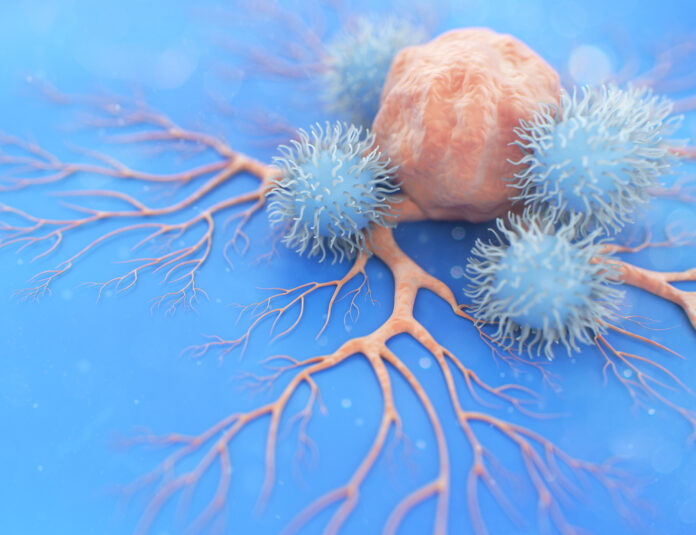
Researchers at Genentech and Stanford University have found 776 genomic alterations linked to survival outcomes across 20 cancer types with specific immunotherapies, chemotherapies, or targeted therapies. The team carried out a comprehensive analysis of 78,287 U.S. cancer patients with detailed somatic mutation profiling integrated with treatment and outcomes data extracted from electronic health records.
They also used the data to create a machine learning model to predict response to immunotherapy in one type of lung cancer.
“Additionally, we demonstrate how mutations in particular pathways correlate with treatment response,” they wrote.
Their study appears in Nature Communications and was led by Ruishan Liu, PhD, department of electrical engineering, Stanford.
They added, “The adoption of next-generation sequencing (NGS) has revolutionized genomics profiling, positioning it as an invaluable tool in cancer care. Yet, despite the vast mutation data available, only a limited number of these mutations are associated with validated treatments.”
Most of these findings are one offs, for particular cancers. In the age of genomics, clinico-genomics, and massive databases should be expected more.
But, the researchers pointed out, there is growing evidence large-scale, real-world, clinico-genomics data can identify useful response biomarkers for cancer treatments. For example, using a cohort of 40,903 patients, these researchers earlier identified 458 statistically significant gene-treatment interactions in eight common types of cancer (Liu et al., 2022).
In the current study, the team used a broader, updated version of that dataset, with one and a half more years of data and patient follow-up, encompassing 12 additional cancer types (20 vs. 8 previously), and more patients (78,287 vs. 40,903 previously).
The data came from the Flatiron Health-Foundation Medicine U.S.-based, de-identified clinico-genomic database (FH-FMI CGDB). This data was sourced from ~280 U.S. cancer clinics. The dataset includes information on patients with: advanced non–small-cell lung cancer, metastatic breast cancer, metastatic colorectal cancer, metastatic pancreatic cancer, ovarian cancer, metastatic prostate cancer, gastric cancer, advanced melanoma, advanced bladder cancer, endometrial carcinoma, metastatic renal cell carcinoma, head and neck cancer, small-cell lung cancer, multiple myeloma, acute myeloid leukemia, hepatocellular carcinoma, diffuse large B cell lymphoma, chronic lymphocytic leukemia, follicular lymphoma, and mantle cell lymphoma.
With this data, they examined the association of mutations within specific genes on overall survival (OS)—defined as the duration between cancer diagnosis and death—across 20 cancer types. They identified 95 genes that are significantly associated with survival in at least one of the cancer types under study. For example, mutations in TP53, CDKN2A and CDKN2B were associated with worse overall survival in patients across most cancer types— a finding consistent with other groups’ work.
Finally, they used statistical methods to find specific gene mutations that might affect treatment outcomes and found 776 gene-treatment interactions associated with survival with specific treatments. These findings were consistent with their earlier, smaller study.
They write that “Delving into the patients’ tumor mutation profiles, treatment histories, and survival outcomes, we characterize somatic genomic alterations that notably predict the patients’ survival on specific immunotherapies, chemotherapies, or targeted therapies.”
The team added, “Contemporary research accentuates the powerful capability of real-world data, especially those extracted from electronic health records (EHRs), in ascertaining treatment impacts, emulating control groups for singular clinical trials, and refining eligibility benchmarks for oncology trials.”
“This study demonstrates how the computational dissection of large-scale real-world data can propel precision oncology forward, offering useful insights into both gene-treatment and pathway-treatment dynamics in oncology.”









![Best Weight Loss Supplements [2022-23] New Reports!](https://technologytangle.com/wp-content/uploads/2022/12/p1-1170962-1670840878.png)




